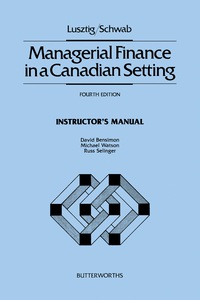Question
A holding company listed on the Athens Stock Exchange (ASE), which invested the majority of its capital (80%) in the real estate and banking sector
A holding company listed on the Athens Stock Exchange (ASE), which invested the majority of its capital (80%) in the real estate and banking sector five years ago, has experienced a dramatic decline in its stock price over the past two years. Since then, no restructuring of its portfolio has taken place. This led the major shareholders to take action and put pressure on the company to change its investment policy. As a result, the management team was forced to conduct a hasty study proposing the acquisition of a well-known food and catering chain. However, since these shareholders have lost trust in the company's management, they have assigned the specialized department of the company's business consultants, where you work, to verify the accuracy of the valuation calculations for the food company. Their aim is to subsequently challenge the management's proposal at the General Shareholders' Meeting.
The acquisition offer price resulting from the initial management study is 2.39 per share. You have collected the data from Tables 1a and 1b, which are consistent with the ones used by the current management team, including forecasts for a five-year time horizon.
After the completion of the five-year period for calculating the terminal value, you have decided to use the Gordon Growth Model as a template for the terminal growth rate. However, you will need to calculate the Cost of Equity (CoE) and the weighted average cost of capital (WACC) of the target acquisition company based on the assumptions that the yield on the 10-year German risk-free government bond is 2.5%, the market risk premium (Rm-Rf) for the Greek market is 8%. The market beta (E) of the food company is 0.65. The tax rate is 22%.
The pre-tax cost of borrowing for the company is currently 6% based on its current level of debt. However, it is anticipated that as a result of the acquisition, within 2023, the acquiring company (the purchasing company) will require the target company to double its existing debt (in absolute terms) in order to upgrade its production line. Consequently, the creditworthiness of the company will decrease, and the cost of borrowing will increase to 7%. At the same time, you estimate that due to the increase in debt, the company should not pay dividends at least for the year 2023, and therefore it will retain its profits.
The data regarding the target company under acquisition are as follows:
Table 1a. Key Fundamental Figures of Food Company as of December 31, 2022:
| Sales | 80,000,000 |
| Equity (book value) | 20,000,000 |
| Total Bank Borrowings: | 10,000,000 |
| Total Bank Borrowings*: | .................. |
| Interest Expenses* | 1,000,000 |
| Extraordinary Profits/(Losses): | 500,000 |
| Cash and Cash Equivalents*: | 2,000,000 |
| Number of Shares | 10,000,000 |
| Market Value of the Company as of June 12, 2023: | 18,000,000 |
| Share Price as of June 12, 2023: | 1.80 |
Note: *These figures are as of December 31, 2023.
Table 1b. Key Assumptions & Hypotheses:
| Sales growth rate for the next 5 years (2023-2027): | 6.00% |
| Cost of Goods Sold as a percentage of Sales: | 80.00% |
| General and Administrative Expenses as a percentage of Sales: | 10.00% |
| Depreciation (as a percentage of Sales): | 3.00% |
| Tax Rate: | 22.00% |
| New Investments in Fixed Assets (as a percentage of Sales): | 4.00% |
| Working Capital (as a percentage of Sales): | 2.00% |
| Long-term growth rate (after the year 2027): | 2.00% |
| Beta () of the food company: | 0.65 |
| Market Risk Premium: | 8.00% |
| Risk-Free Rate (Rf): | 2.50% |
| Pre-tax Cost of Borrowing (Cd-pretax) of the company before additional borrowing: | 6.00% |
| Pre-tax Cost of Borrowing (Cd-pretax) of the company after additional borrowing: | 7.00% |
1. Please complete the following tables by answering the corresponding questions:
a) Find the post-tax profits for 2023 and the book value of Equity as of December 31, 2023.
Table 2a. Income and Equity as of December 31, 2023
| EBIT | |
| Interest Expenses | |
| Extraordinary Profits/(Losses) | |
| Profit before Taxes | |
| Income Tax | |
| Post-tax Profits | |
| Equity (book value) |
b) Calculate the Weighted Average Cost of Capital (WACC) of the company before and after the change in capital structure (doubling of debt).
Table 2b. CoE & WACC
| WACC of the food company before December 31, 2022 | WACC of the food company after December 31, 2023 |
| Company's beta () = 0.65 | Company's beta () = |
| Cost of Equity (CoE) = | Cost of Equity (CoE) = |
| D/E of the firm = | D/E of the firm = |
| E/D+E = | E/D+E = |
| D/D+E = | D/D+E = |
| WACC = | WACC = |
c. What observations do you notice regarding the CoE & WACC of the two companies? Which factors affect the different costs of capital?
d. Which of the two WACC values you have found will you use to calculate the discounted cash flows (DCF) of the food company before and after the borrowing mentioned in question 2, and which one is correct?
Step by Step Solution
There are 3 Steps involved in it
Step: 1

Get Instant Access to Expert-Tailored Solutions
See step-by-step solutions with expert insights and AI powered tools for academic success
Step: 2

Step: 3

Ace Your Homework with AI
Get the answers you need in no time with our AI-driven, step-by-step assistance
Get Started


